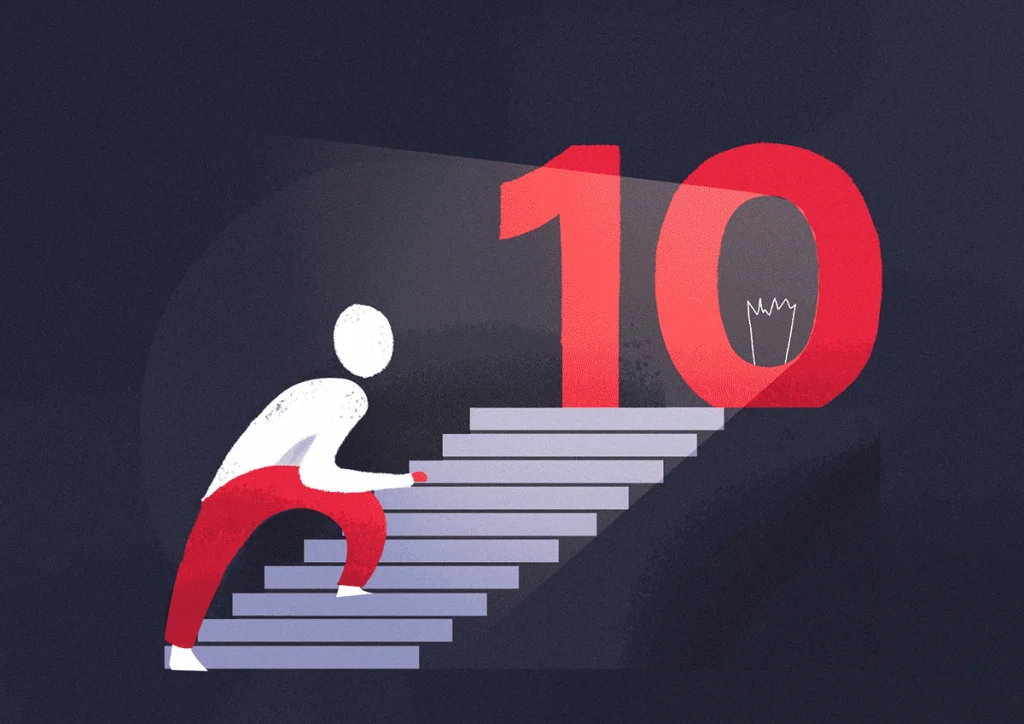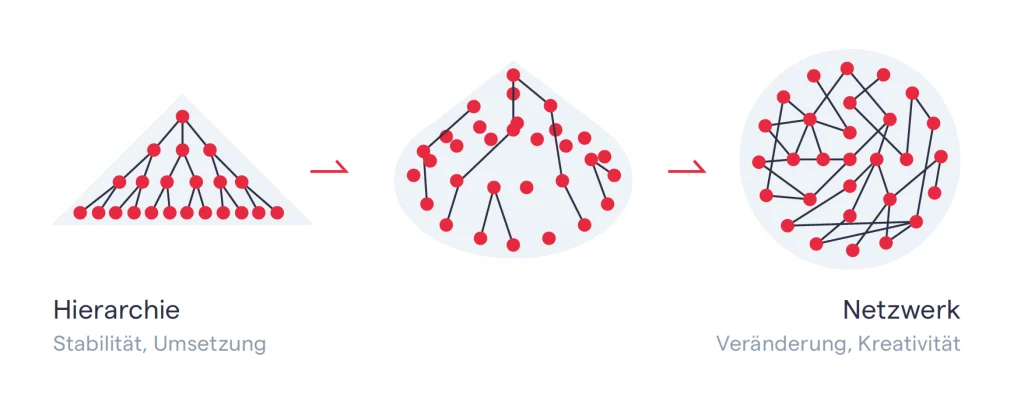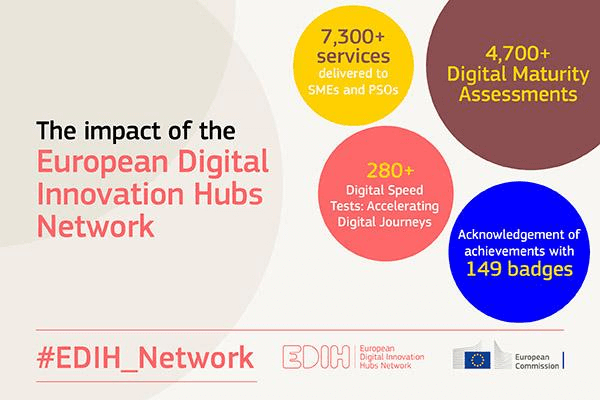

In 10 steps to an innovative company
"The web is more of a social invention than a technical one."
Tim Berners-Lee
Effective innovation management requires the networking of many creative minds, preferably in a multidisciplinary way! In article 7 of this series, the focus was on the technical tools and digital innovation platforms that can be used for networking within the company, but also for open innovation initiatives with customers and fans. Due to hierarchical structures, profit centers and distributed locations, many people do not even meet in the work process, even though they belong to the same company. The creative potential of networking different knowledge and minds therefore remains untapped.
The cross-departmental generation of ideas in networks means that ideas from different people and specialist areas can be developed and evaluated together. Networks work quickly and in a solution-oriented manner. Transparency is an important prerequisite for this. In companies, crowdsourcing initiatives with digital tools allow us to discover people with knowledge that was previously unknown in every idea initiative. These innovative impulses often come from private interests or experiences from previous jobs.
Networks are present in all companies and work particularly well in the development of ideas because they are non-hierarchical, pressure-free and solution-driven. Imagine the company hierarchy as a pyramid (see illustration): If you turn this by 90 degrees, you can see the same heads from the bottom, but the connections are no longer directive relationships, but the shared past (e.g. joint studies), the shared coffee machine for informal discussions or trust in people.

Many ideas that can be useful for companies arise in these dynamic networks, often in passing, in everyday conversation.
This phenomenon of knowledge networking can be explained by findings from brain research: It has been proven that creative ideas arise through the neuronal networking of existing knowledge in the brain. This works particularly well when the human brain is in a kind of "idle state" (known as "low arousal theory"). So if you are working hard on a solution, you have little chance of a flash of inspiration because the concentration within one region of the brain blocks the networking. This creates a "hot spot" in the brain that ties up all the energy.
An organization that manages its innovation initiatives exclusively through "prescribed change processes" via the hierarchy suffers a similar fate. Here, too, we experience blockages. A change of environment (e.g. jogging or hiking) or the use of a creativity method with playful elements can create a brain state that is particularly helpful for generating ideas. The saying: "Solving problems means detaching yourself from the problem" illustrates this effect.
Informal networks that find creative solutions voluntarily and without pressure are very effective in solving problems and generating ideas for the future. The coffee machine in the break room or the outdoor smoking area can be a center of this creative network. These places become attractive and you also meet non-smokers in smoking areas who want to be part of it! Giving these creative minds digital tools broadens the scope of possibilities and increases their reach.
If you want to promote the power of these networks, you also need to rethink the role of the innovation manager: Innovation management thus becomes the central hub where ideas and resources are moved. In the company suggestion scheme, the innovation manager had a central "gatekeeper function" to decide whether ideas made sense. A thankless task for creative minds who are disappointed when an idea is rejected. Today, due to the complexity of solutions, this task can only be solved by using a knowledge network with the involvement of technical experts.
Innovation management today is about sending impulses into the network and thus moderating the direction of idea development. Networks develop a certain momentum of their own and bring unexpected sources of ideas to light. Playful elements of "gamification" promote momentum and the frequency of ideas. Interesting personality profiles can be identified on the basis of movement data, e.g. in the form of a points system (high scores, similar to a game). From this, companies can subsequently derive potential for employee development .
This has advantages for central innovation management: The number of ideas increases many times over. At the same time, the amount of support required is reduced to a fraction of the previous amount of time, as many co-thinkers provide immediate feedback on ideas and thus fulfill an important function in idea management as a collective. The preliminary evaluation of ideas by the collective intelligence of employees is also on a sounder footing than an evaluation by management alone. At the same time, the increased transparency also promotes change management and the implementation of ideas.
In order to overcome your own "operational blindness", it is advisable to expand your innovation network to include an additional external layer: customers and fans of the solutions or your own brand have long been willing to think along with you on future initiatives and contribute ideas and feedback. This "open innovation strategy" can be realized with a digital innovation platform. Ideas can be collected and pre-assessed at any time and with a wide reach. At the same time, the customer relationship is digitized and a customer community becomes effective.
With "Lego Ideas", the well-known brand Lego has created an interface with which customers can become Lego designers. Anyone who manages to inspire at least 10,000 "supporters" for their design will be included in Lego's standard product portfolio and receive a share of the product sales. Lego has thus developed a digital business model and at the same time enormously reduced the innovation risk through early customer feedback and networking.
Österreichische Post's Loop product also found its starting point in brainstorming with customers and creative external initiators. On the green Innovation Plattform "innovation ideas" from isn - innovation service network, 90 ideas were submitted digitally by more than 200 users who took the opportunity to make parcel logistics a little more sustainable with reusable packaging.
If you want to reduce the innovation risk even further, you can invite your community to participate financially in future projects with "presales crowdfunding". At the end of the prototype or planning phase, a prototype is sold to the crowd to find out whether this solution is accepted by the market and whether the initial series can be produced without risk. The next phase of the innovation process only starts once there is sufficient security and a significant amount of money in the account. Through crowdfunding, the money comes directly from customers and thus provides "pre-sold revenue" even before the start of production. Example: Fieberbrunns neue Seilbahn (Saalbach) is currently being co-financed by the customer crowd with up to €12,000 per person via vouchers for future services. At the same time, the new solution is being publicized to a wider audience.
Conclusion: The added value of networks is not only very high in internal innovation management, but also in open innovation. The increased transparency and early involvement of employees and customers reduces the risk of failure. It is foreseeable that having your own social community on your own digital innovation platform will be part of innovation management for innovative companies in the future, but also part of the communication strategy.
How are future projects handled in your company? Is it ensured that all employees can participate in innovation projects with ideas and feedback? Are your customers stored in a linear address list or do you already operate a digitalized open innovation network with real innovation power?
As always, I look forward to feedback and wish you a relaxing and creative Sunday!
Reinhard Willfort, Innovation Doctor, www.willfort.at
Event tip: The 3rd part of the online training on Digital Innovation Management focuses on the topic of "Building and integrating the community". Register now and be part of it!





